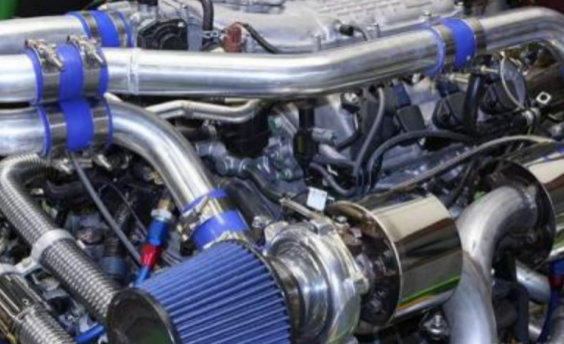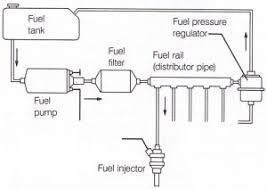
The function of the fuel system
Automobile fuel system includes: carbureted fuel systems, gasoline engine fuel injection system (gasoline injection systems), gasoline engine direct injection fuel system, traditional diesel system, diesel engine fuel injection control system, etc.
Carbureted fuel system has been phased out. The following is an example of gasoline injection system. Modern gasoline injection system is controlled electronically, the fuel quantity and quality can be set to suit the engine operating conditions accurately. In this article, we will briefly introduce the components and the function of the fuel system.

Gasoline injection fuel system
Gasoline injection fuel system is a fuel supply device, a gasoline engine uses a fuel injector to inject a certain amount of gasoline into the cylinder or inlet pipe directly at a constant pressure. The fuel system is an important part of the engine, its function is to store fuel and deliver clean fuel to the inlet of the injection pump unimpeded, then the fuel supply system inject the fuel into the combustion chamber at the most appropriate timing and atomization regularly.
The components of gasoline injection fuel system
The gasoline injection fuel system is composed of three main parts: sensor, electronic control unit (ECU) and actuator. From perspective of the working situation to analyze fuel injection device, it is composed of three systems: fuel supply system, air supply system and electronic control system. The picture shows the overview of the gasoline injection fuel system.

1. ECU
ECU calculates, processes and judges all kinds of information input by various sensors of the engine, based on its own stored program, and then outputs instructions to control the action of relevant actuator, so as to achieve the purpose engine work fast accurately and automatically. Electronic control unit (ECU) is an integrated control device of engine, whose basic composition is mainly microcomputer.
2. The sensor
The sensor converts non-electric signal into electric signal, or converts physical, electric and chemical signals into the signals that ECU can read. The main sensors on the car include: speed sensor, oxygen sensor, crankshaft position sensor, intake pressure sensor, temperature sensor (such as water temperature, intake temperature, etc.), air flow sensor, knock sensor, throttle position sensor, speed sensor, ignition signal sensor, etc.
3. The actuator
The actuator completes the required mechanical action based on the electric control signal output by the electronic control unit, aims to realize a series of adjustment and control. In automobiles, the main actuators include: electric gasoline pump, electronic fuel injector, idle valve, ignition device, exhaust gas recirculation.etc.
 James Smith
James Smith  August 21, 2020
August 21, 2020